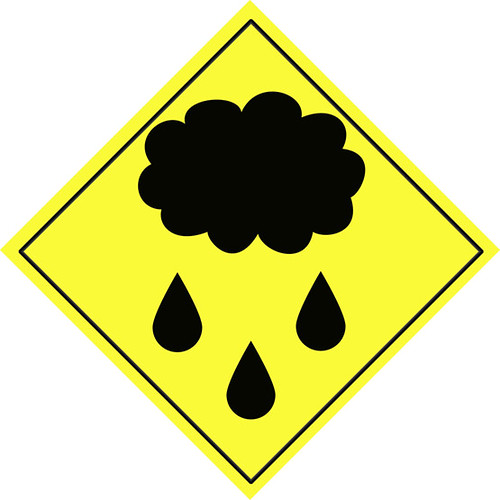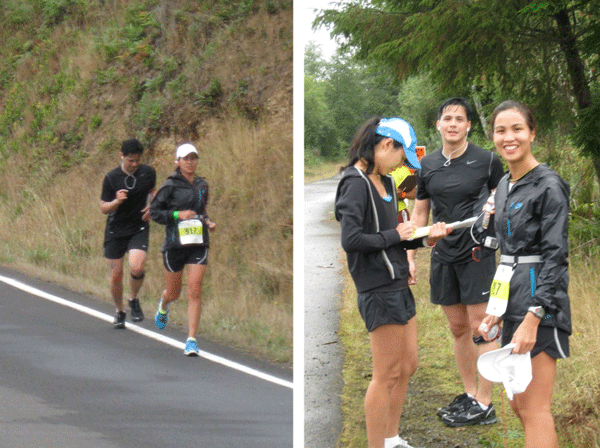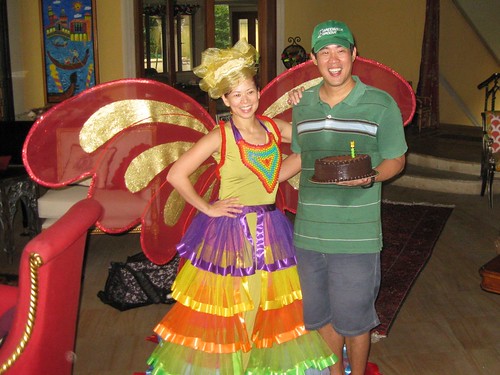With our erratic weather, it seems like every marathon now is under risk for rain. Last year alone, New York City Marathon was cancelled due to Hurricane Sandy. California International Marathon pushed through despite rain and floods. And, how many times has it rained at Milo Marathon?! Good thing we runners are always raring to run whether rain or shine! Right?! Right!

In two days, TBR Dream Marathon is set. As we’ve announced, it pushes through rain or shine unless we have a major storm that risks our runners safety.
Having said that, we hear that the weather is expected to improve (hey, even Kuya Kim tweeted it!), but we do know—even if they don’t tell us—that our dear runners are anxious over the possibility of rain.
So, we’ve prepared a few tips from our TBR Dream Team who, combined, have run almost 10 marathons in the rain! You may read a few duplications below, but I left them in there anyway to highlight their importance.
FROM JIM LAFFERTY: Ran 5 to 6 marathons in the rain, Co-Founder TBR Dream Marathon
Tip 1. : Have throwaway rain gear for start. Stay dry and warm as long as possible. Then discard as you warm up running.
Tip 2: Over lubricate. Wetness means more chafing and blisters! Lube up. Vaseline or bodyglide on EVERY part of skin. Watch between toes!
Tip 3. Keep moving. Rain causes rapid cool down. Convert all stop breaks into walk breaks. A 5 minute stoppage can leave you too stiff to restart!
Tip 4: WICKING GARMENTs. Be sure to wear wicking shirt and shorts that expel moisture. Cotton is WORST to wear in rain as it absorbs massively and adds a “drag” to your running! Who needs an extra 3 kilos?
FROM LIT ONRUBIA: Ran 2 marathons in the rain, Head coach TBR Dream Marathon
Tip 5: Think NO blisters. This is the biggest issue that you need to address and eliminate. Wet socks means greater chance of blisters. Back in 2010, while I knew that taping my toes would be uncomfortable, I also knew that it would reduce the chance of blisters. So I put band aids on every toe before I left my room and brought extra band aids with me to the race, just in case. (Also, know where to place the band aid pads on your toes. I typically blister between the toes, not at the bottom. So I adjusted the band aids accordingly.)
Tip 6: Don’t over-dress. You may be running in the rain but it doesn’t mean that it’ll be cold. At least not in Nuvali. So you really don’t need a lot of layers that will just be a hassle to carry around for 6 hours. So just try to stay as dry as possible prior to the race (maybe wear a jacket). But then pack away the jacket when it’s time to warm-up and just wear a large garbage bag (which you can buy at any grocery) when you take to the road. A garbage bag, with holes for your head and arms, is ridiculously effective in keeping you dry and warm. And it’s so easy to rip it off and ditch it after 3-7K, when you’ve warmed up.
Tip 7: Wear a hat or visor to keep the rain from constantly drizzling on your eyes and face. That can be irritating.
Tip 8: Take shorter but quicker strides until you get a better sense of your body and the wet roads. As you gain confidence in your stride, which will happen as you get more comfortable with the conditions, run your normal run.
Tip 9: Rainy or colder weather doesn’t mean you hydrate less. Stick to your normal hydration plan which you’ve been practicing for months.
Tip 10: Stick to your race plan. Because your body won’t heat up as fast in the rain, you will find it easy to go faster than your usual pace, especially in the first 10K. Fight off this urge and stick to your planned pace. Whether you’re racing under the sun or in the rain, always remember that “1st half=conservative, last 10K=aggressive” is usually the best plan.
Tip 11: Embrace the conditions and just run your run. You’ve trained long and hard for this day so let nothing ruin it. Besides, we’d all rather run under the rain than in 90 degree heat, right? I thought so.
FROM NEVILLE MANAOIS: Ultramarathoner and triathlete, TBRDM Race Director
Tip 12: Wear a cap, not only does it shield your eyes and face from the rain but also, helps manage body heat.
Tip 13: Wear a disposable rain coat or garbage bag heading to the starting line, it helps manage heat. Throw it away once your body gets warm.
Tip 14: It’s cold at the start of the run, but it will get warmer quickly once you start running. Don’t overdress or put on too much clothing. Just wear your normal running clothes.
Tip 15: Eat food or drink fluids. You’re losing energy since your body is burning fuel and managing your temperature.
Tip 16: Be careful with your steps. The ground is slippery.
Tip 17: After you cross the finish line drink warm beverages, and change your wet clothes, and keep warm immediately. Drink and eat as much as you can.
Tip 18: Weather will be unpredictable, don’t bring any electronic items.
Tip 19: No point changing socks after the rain, your shoes and the ground is still wet.
Tip 20: Run in packs or with groups, rain makes road visibility poor. Running in groups allows motorists and marshals to monitor you better.
Tip 21: Don’t be afraid to get wet and have fun.
 Soaked at the Nike Hood to Coast 2009 in Oregon. One of my most memorable runs under the rain
Soaked at the Nike Hood to Coast 2009 in Oregon. One of my most memorable runs under the rain







